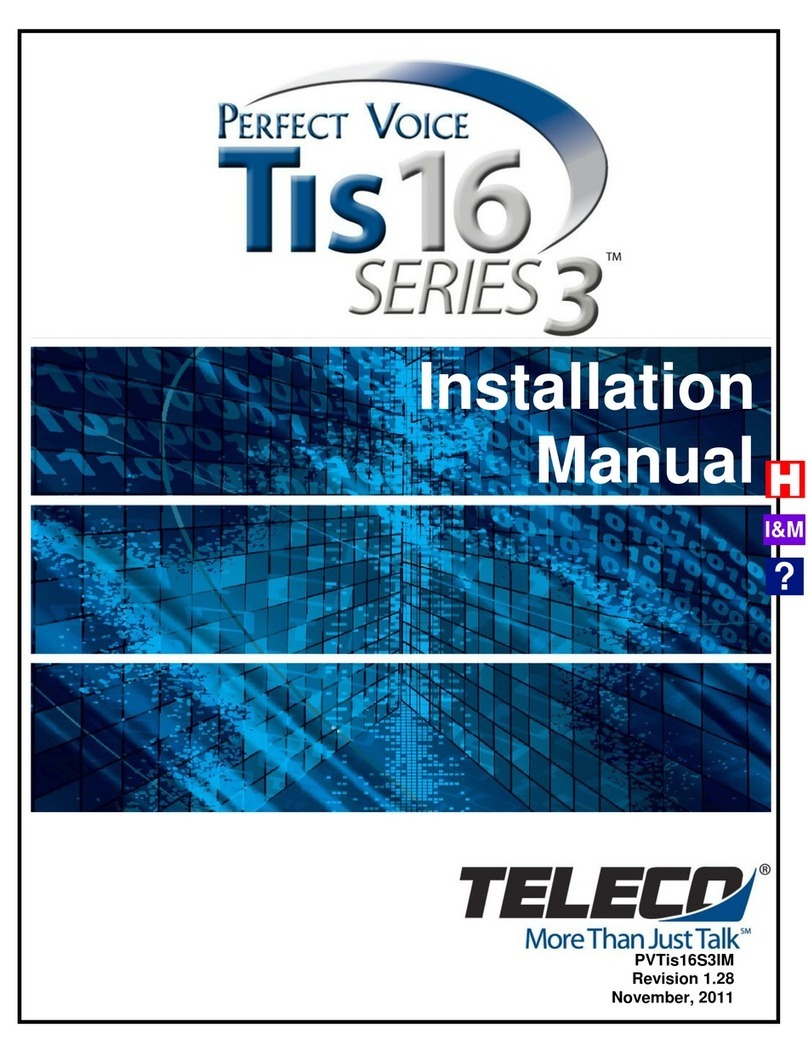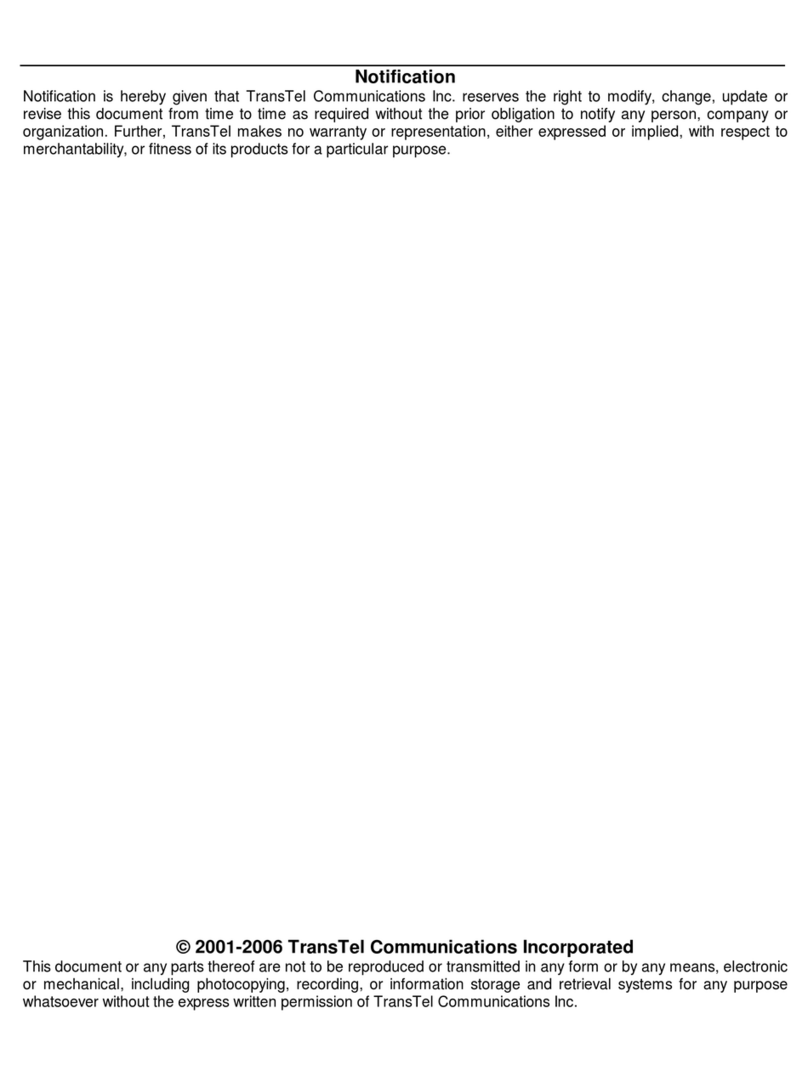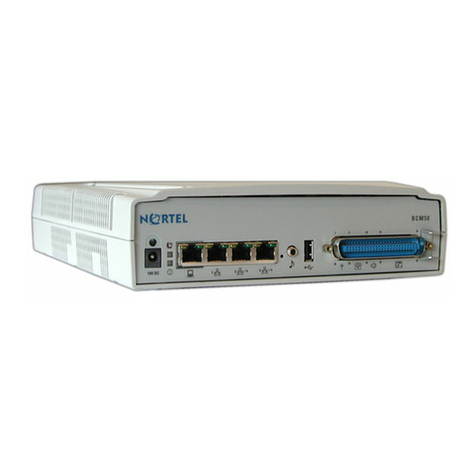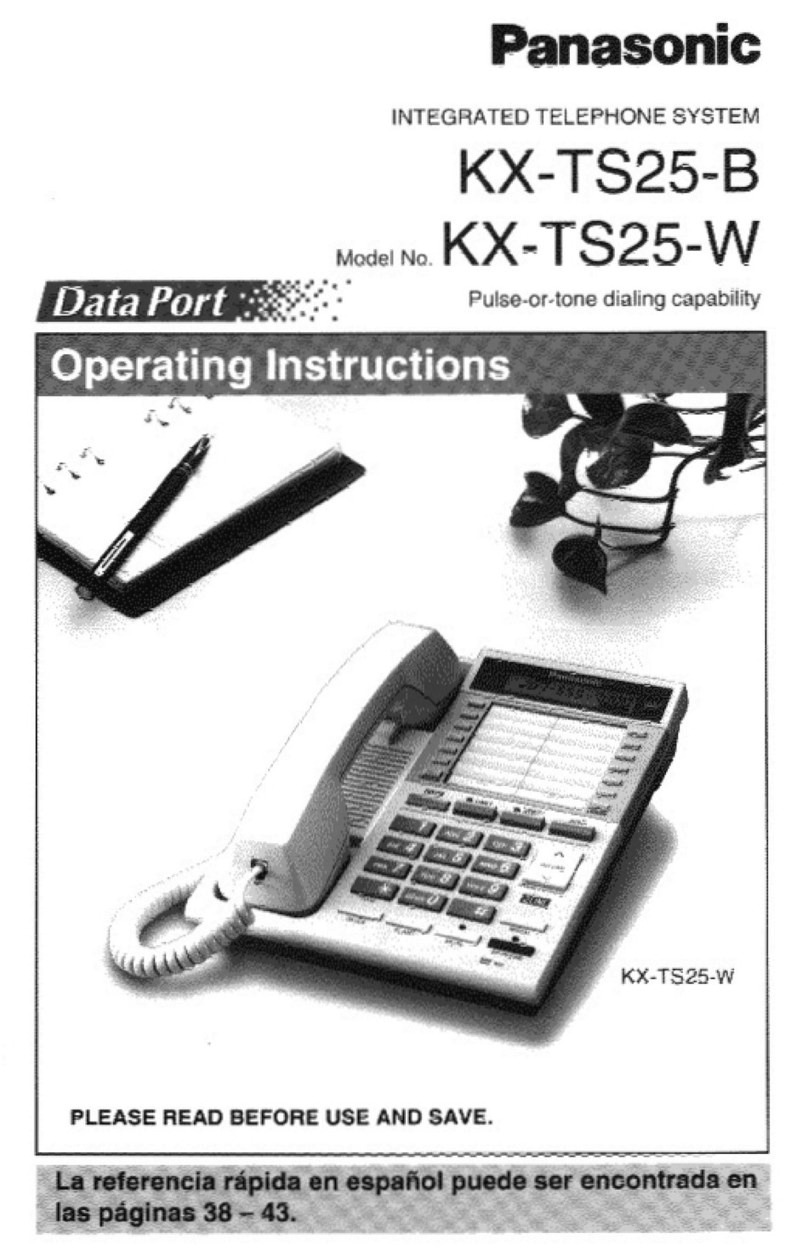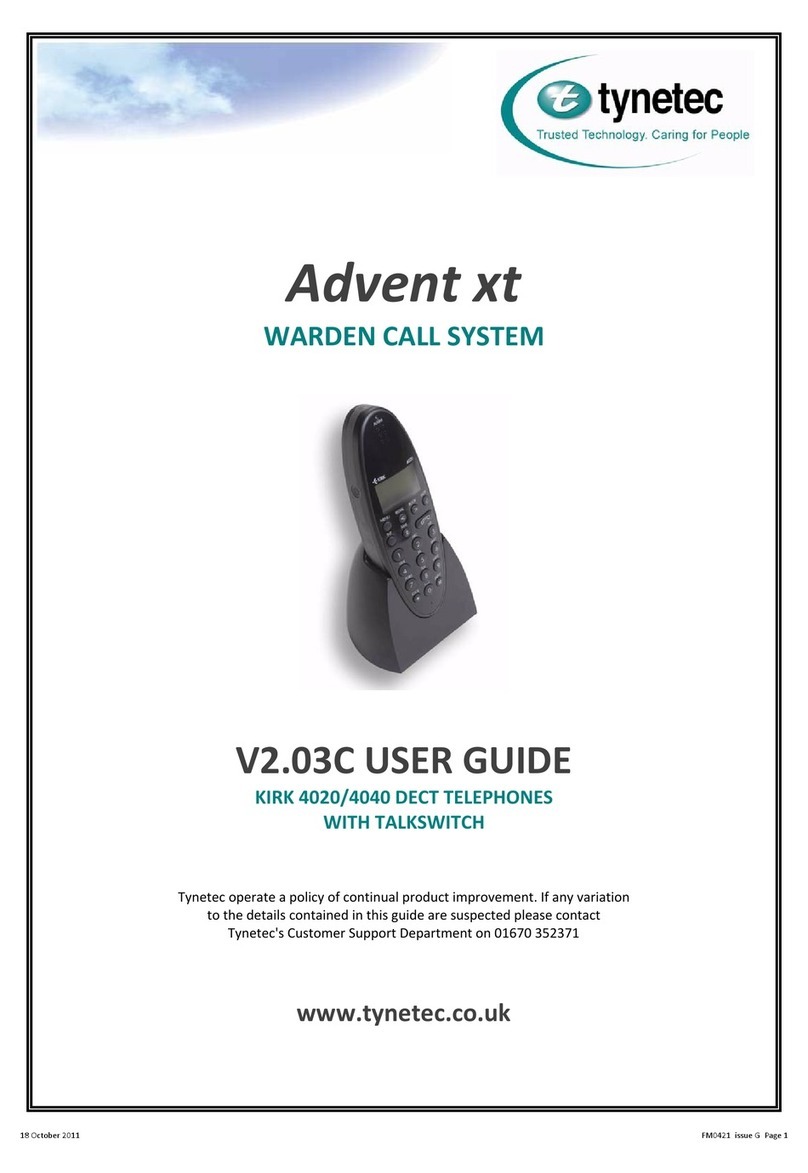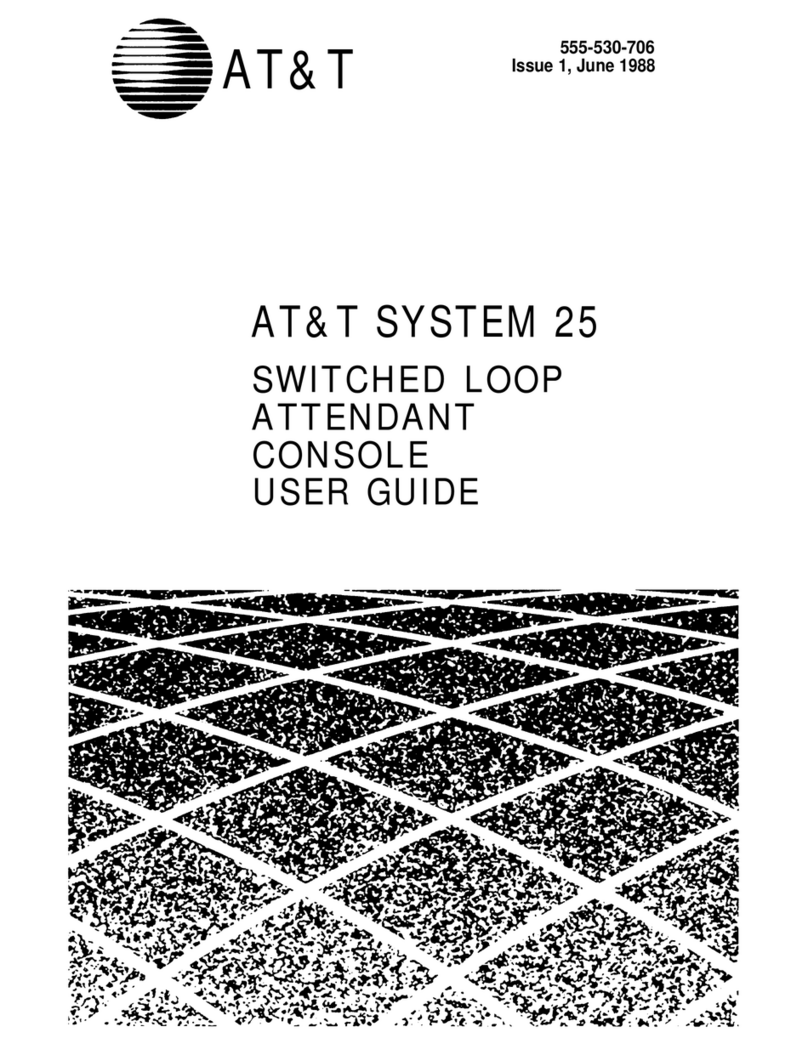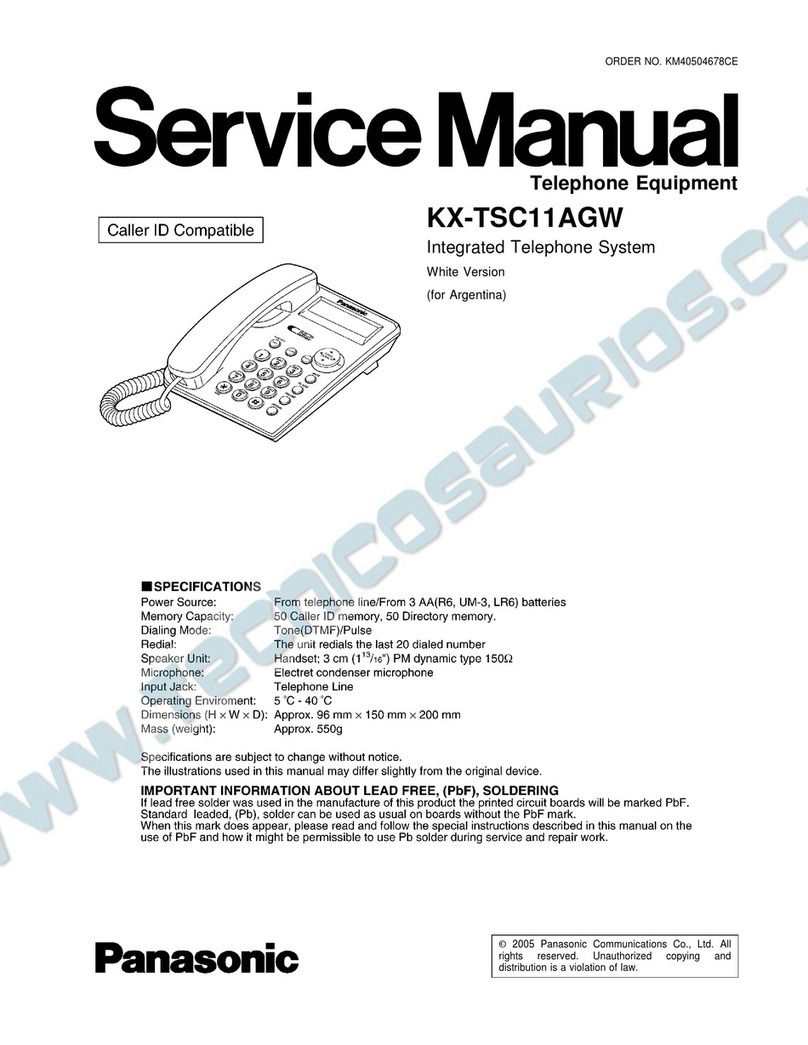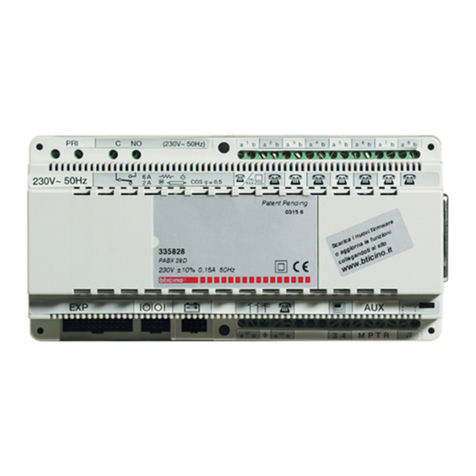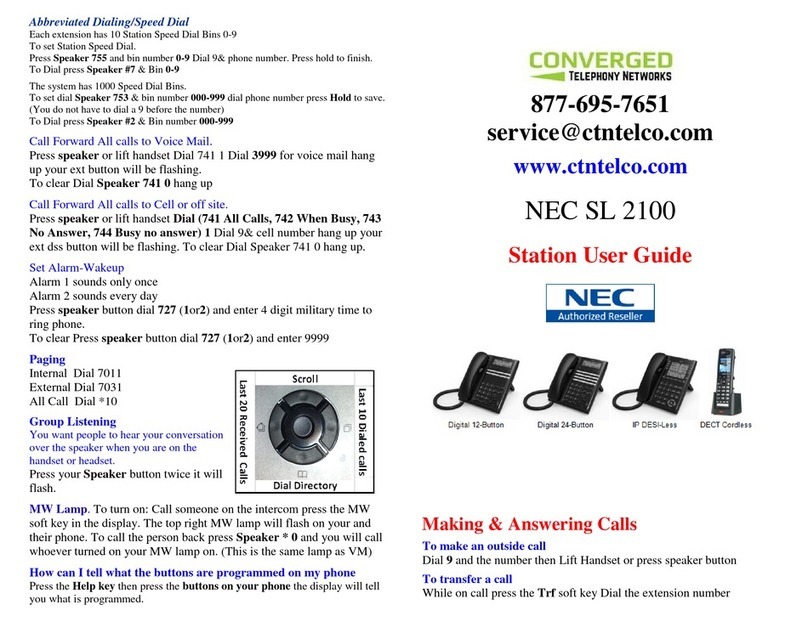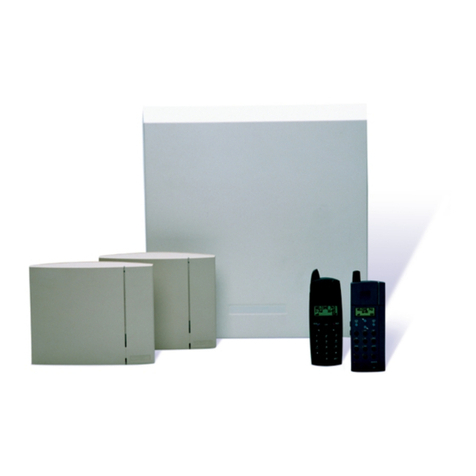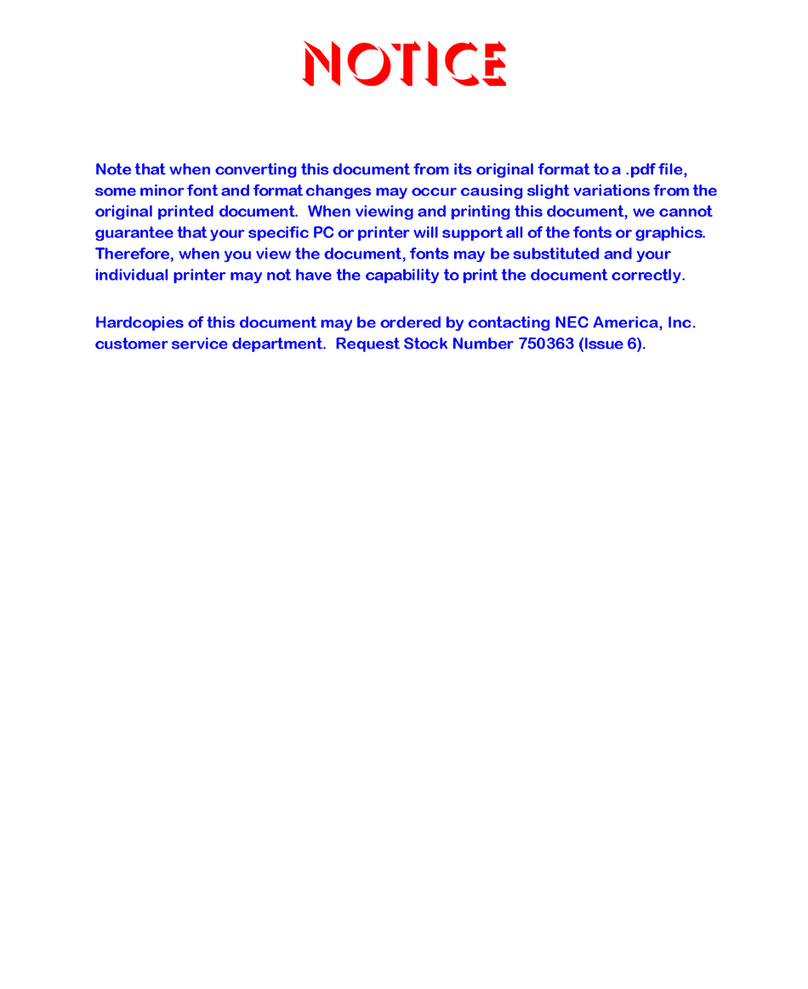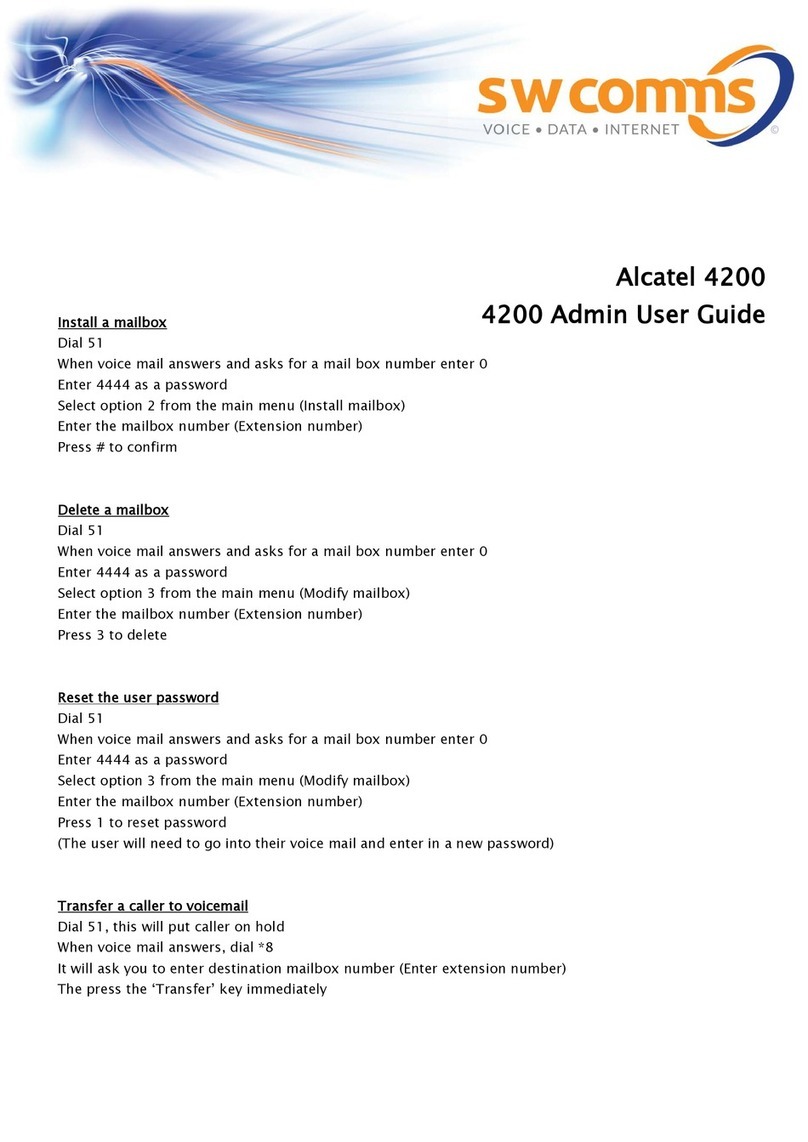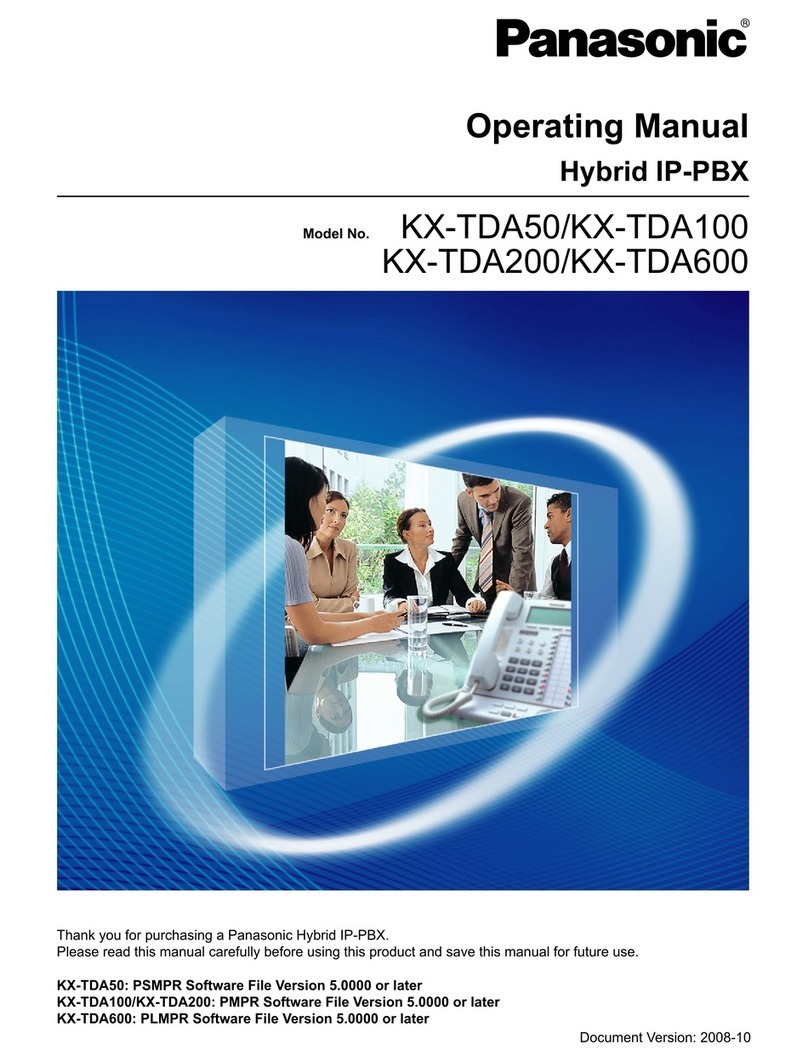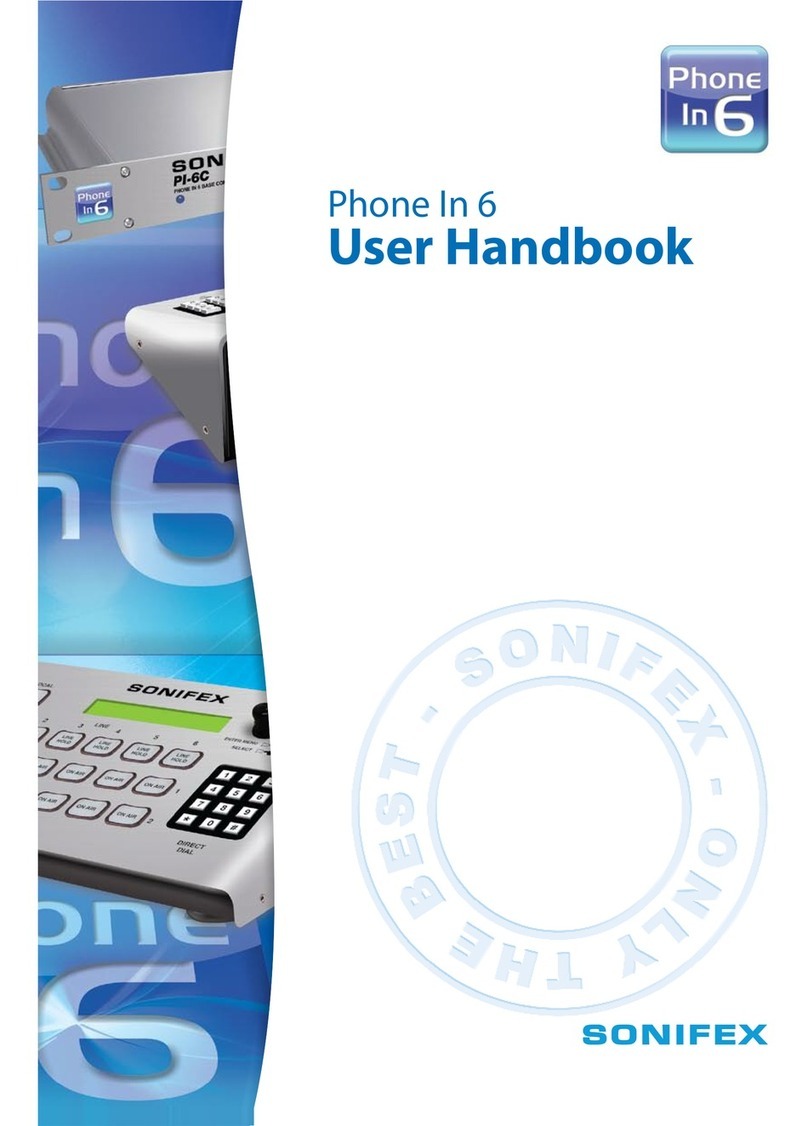
TCI Library- http://www.telephonecollectors.info/
2.00 IDENTIFICATION
STANDARD 601A00-0P0 KEY SERVICE
UNIT
2.01 The
basic
601A Key Service
Unit
(KSU)
is
designed
for
wall
or
panel
mounting
and in-
cludes
a Backboard and Card Frame Assembly,
a Power Supply, an Interrupter,
connecting
block, and a cover.
2.02
The
Backboard
and
Card
Frame
Assembly
has seven 18-contact card connec-
tors, one 20-contact card connector, and
one
44-contact
card
connector.
Two
of
the
18-contact
connectors
are
dedicated
to
the
Power
Supply
and Interrupter. The remaining
five are wired
for
CO/PBX Line cards. Pins 1
through
18
of
the 20-contact card
connector
are
wired
to
individual
terminals
on the
connecting
block
so
it
can be
easily
wired
for
various op-
tional
cards. (NOTE:
This
connector
will
not
ac-
cept
20-pin
cards
such
as
the
405A
Semiautomatic
Exclusion, K414A Ringdown
Tie Line,
or
the K416A
Station
Line circuits.)
The 44-contact card
connector
is
dedicated
to
intercom.
Power Supply (183969-101)
2.02 The
power
supply
provides all voltages
required
for
a system using buzzer
signaling
or
call
announcing.
Power
input
is 115 Vac, 50/60
Hz and
outputs
are as
follows:
(1)
Regulated
-24
Vdc at 1
amp
for
intercom
and line card
talk
battery
and
power
for
logic
circuits
and relays.
(2)
18
Vac at 1 amp unregulated
for
power
to
buzzers
for
intercom
or CO signaling.
(3)
10
Vac at 2
amps
for
station
lamps.
This
will
supply
50
lamps,
continuous
load.
2.04 The
unit
consists
of
a
transformer
and
other
electrical
components
mounted on a
printed
circuit
board. It
includes
a fuse,
power
cord and a
jack
for
connection
to
a ring
generator
kit
P/N184162-101.
2.05 The
power
supply
board
plugs
into
the
power
supply
connector
provided in the 601A
key system.
Two
plastic
push fasteners are pro-
vided
to
anchor
the
power
supply
to
the KSU
frame. The
power
cord
plugs
into
connector
J1
on the PC board. (3-pin connector.)
KSP601-00A
Interrupter Card (183969-101)
2.06 The
interrupter
(P/N 183965-101) is in-
tended
for
use
with
the 601A key system
to
pro-
vide lamp flash, lamp wink, and interrupted (in-
termittent)
ringing. The ringing may be 105 V~c
or
18
Vac depending on the
strapping
of
option
block
TC1
located
near the
center
of
the card at
the
connector
end.
2.07 The
unit
is
installed
by
plugging
it
into
the second (from the top) card
connector
of
the
601A KSU.
RINGING GENERATOR KIT (184162-101)
2.08 A
ringing
generator
kit
must be sepa-
rately ordered and
installed
if
ringers are used
in
the
system.
The 184162-101
Ringing
Generator
Kit
was designed
for
the 601A key
system for
this
purpose. It has a nominal out-
put
of
105 Vac,
30
Hz.
CO/PBX LINE CARD KTU(K400E}
2.09 One K400E CO/PBX line card
KTU
must
be separately ordered and
installed
for each CO
or PBX line
coming
to
the system. These are in-
stalled
by
inserting
them
into
prewired line card
connectors. The K400E
KTU
includes
circuitry
to
facilitate
music-on-hold
and
signaling
through
a separate lead.
DIAL INTERCOM
General
2.10 The dial
intercom
system may be
of
any
one
of
several
configurations:
(1)
Using buzzers for signaling,
with
or
without
dial tone and ringback. (Dial
tone
and
ringback are provided by the call
announcing
card.)
(2)
Using ringers for signaling,
with
or
without
dial tone and ringback.
(A
ringing generator
must
be
installed
for ringer signaling, and a call
announcing
card
must
be
installed
to
provide
dial tone and ringback.)
(3)
Using call announcers for signaling.
In
this
application,
the call
announcing
card is
strapped to provide a tone burst and return tone
instead
of
ringback. It
also
provides dial tone
Page3
